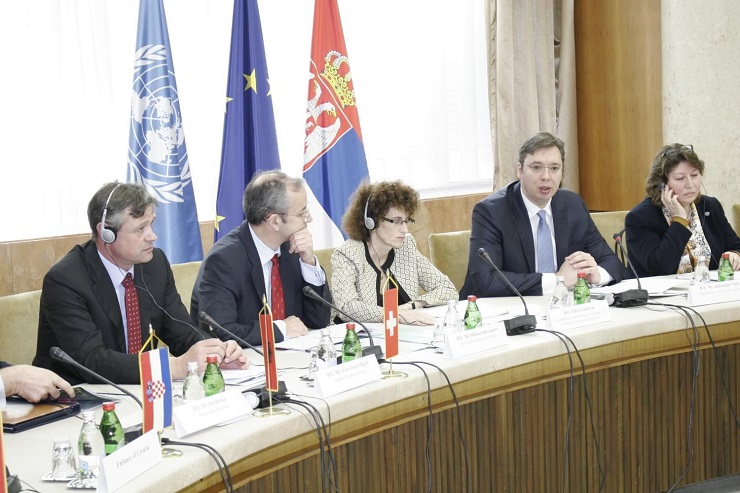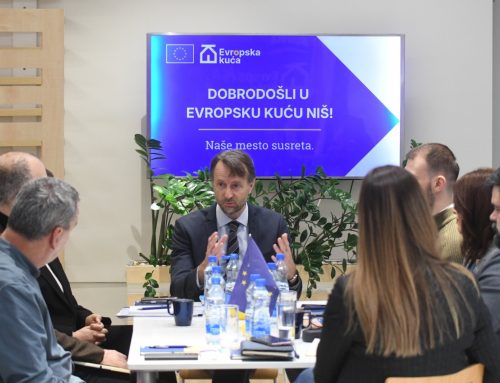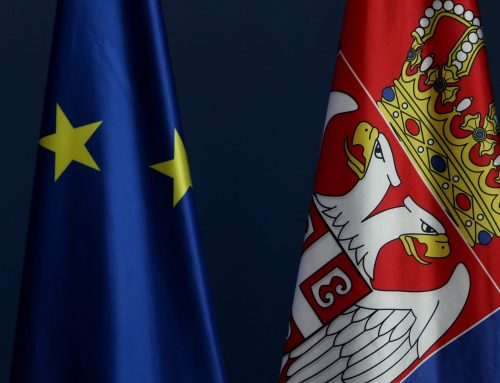Apart from the assistance in tackling consequences of floods, EU will support Serbia in preventing and disaster risk reduction, said Head of the EU Delegation to Serbia Michael Davenport at the presentation of National Disaster Risk Management Programme.
He assessed that there were lessons learnt during last summer’s floods and that was why the EU made hazard maps, whereas Serbia was making constant progress in that field.
Davenport said the EU would finance the supply of equipment for rapid reaction in emergency situations with 14 million euros, and would focus on rehabilitation of embankments, channel drainage systems and pump stations in certain areas.
At operational level the EU can finance and promote joint actions to prevent, and to overcome common challenges in a concerted way. Most natural disasters are such that no country can tackle their causes or consequences in isolation from its neighbours. This idea has imposed itself to our eyes during the disastrous floods which hit Serbia, BiH and Croatia in May 2014 and it has accompanied our immediate reaction in the aftermath of the floods, both when it came to repairing the damages and to plan actions for the prevention of future disasters,“ Davenport said.
He reminded that, as the first and most immediate measure, three million euros in humanitarian aid were channelled to help the most vulnerable people in both BiH and Serbia, mainly with drinking water, food, hygiene kits, blankets and mattresses. Shortly after, the assistance shifted on short and medium term, starting with the first package of 30 million euros from the IPA 2012 funds was re-allocated from other programmes to support reconstruction of private housing and public infrastructures (hospitals, schools, kindergartens, roads) and rehabilitation of agricultural and other small business activities in 32 most affected municipalities.
With contribution worth 102 mil from IPA funds, the EU is by far the largest contributor to recovery and reconstruction in Serbia. Serbia will also benefit from an additional EUR 10 mil from the regional IPA FLOODS project, aimed at regulating and strengthening prevention measures on the Sava and Drina rivers,” said the EU Ambassador to Serbia.
Davenport said that 100 new family houses were constructed thanks to EU, whereas by May the remaining 51 would be finished. Due to EU funds, 716 damaged family houses were reconstructed, while 154 additional houses are under reconstruction. 419 micro and small enterprises were supported through provision of building material, equipment, machinery and raw material and by the end of May, some 30 more will be back in business.
The EU funded reconstruction of 14 elementary and high schools and one kindergarten, enabling more than 11,000 children and students to continue education. By May 2015, a total of 19.000 will be supported. Nearly 10.000 have already received seeds, fertilisers, seedlings and animal feed.
11.5 kilometres of road between Krupanj and Korenita has been reconstructed, 60.6 tonnes of mosquito control products were provided to 63 municipalities to reduce the risk of spreading infective diseases, water supply system in Trstenik was rehabilitated, Davenport said.
This huge effort will continue during the second half of 2015 with additional 72M EUR of assistance through the IPA funds. These funds will be directed exactly on the topic of today’s discussion – at prevention and risk management and risk reduction,” Davenport added.
As EU Candidate Country, Serbia is a also member of the Early Warning System. Serbia also expressed its interest in joining the EU’s civil protection mechanism, which is currently under consideration by the Director General of DG ECHO. Since January 2015, Serbia also benefits from a regional programme worth 5,75 million euros on flood prevention, preparedness and response, managed by DG ECHO and implemented by the Italian Civil Protection.




